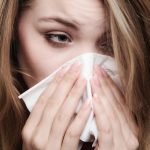Read Time:2 Minute, 31 Second
- What is anaphylaxis?
- Anaphylaxis is the most severe type of allergic reaction.
- It can happen after exposure to certain triggers, such as:
- food – commonly milk, eggs, peanuts, tree nuts and seafood
- bites and stings – including tick bites and snake bites
- some medicines
- Anaphylaxis develops rapidly and can be fatal, so should it always be treated as a medical emergency.
- If anaphylaxis progresses, it can lead to a dangerous drop in blood pressure. This is known as ‘anaphylactic shock’.
- What causes anaphylaxis?
- Anaphylaxis is triggered by the immune system when it recognises a harmless allergen as ‘dangerous’ and releases a natural chemical called histamine. Histamine causes inflammation when it is released in the body.
- The symptoms of an allergic reaction will vary from person to person. They also depend on the type of allergen and where it entered the body (for example, eaten, applied to the skin or inhaled).
- This immune response can affect many different body systems, including the skin, digestive system
How can I prevent anaphylaxis?
People with diagnosed allergies should avoid all triggers and confirmed allergens.
They should also always carry:
- 2 adrenaline autoinjectors (if prescribed)
- an anaphylaxis action plan
- a medical alert device
It’s a good idea to ensure your friends and family know how to follow your anaphylaxis action plan too in case you need help.
and most dangerously, the respiratory or circulatory systems. - What are the symptoms of anaphylaxis?
- Symptoms of anaphylaxis can include any one of the following:
- difficult or noisy breathing
- difficulty talking and/or hoarse voice
- a swollen tongue
- persistent dizziness or collapse
- swelling or tightness in the throat
- pale and floppy (young children)
- wheeze or persistent cough
- Sometimes, other less dangerous symptoms come before anaphylaxis:
- swelling of face, lips and/or eyes
- hives or welts
- abdominal pain or vomiting
- Watch this video from Allergy & Anaphylaxis Australia to learn how to recognise signs and symptoms of an allergic reaction.
- What should I do if someone is experiencing anaphylaxis?
- First aid for anaphylaxis
- Lay person flat and keep them still — do not let them stand or walk.
- If they are unconscious, place them in the recovery position.
- If breathing is difficult or they are vomiting, allow them to sit with legs outstretched, but not to stand or walk.
- Inject an adrenaline autoinjector if one is available.
- Call triple zero (000) and ask for an ambulance.
- Further adrenaline doses may be given if there’s no response after 5 minutes.
- Transfer the person to hospital for at least 4 hours of observation.
- Watch this video from Allergy & Anaphylaxis Australia to see how to position a child or an adult having a severe allergic reaction (anaphylaxis).
- How can I prevent anaphylaxis?
- People with diagnosed allergies should avoid all triggers and confirmed allergens.
- They should also always carry:
- 2 adrenaline autoinjectors (if prescribed)
- an anaphylaxis action plan
- a medical alert device
- It’s a good idea to ensure your friends and family know how to follow your anaphylaxis action plan too in case you need help.


